It was the late 1870s, when four orphaned Bison followed Samuel Walking Coyote home.
Mr. Walking Coyote didn’t know that he was about to become a key player in the history of the North American Bison.
Stories differ, but the prevailing one seems to suggest that Walking Coyote had just returned from one of the last great buffalo hunts on Blackfeet Nation land in Montana.

Prior to the arrival of the train, which cut off migration routes, and, along with the introduction of firearms, which offered the lovely opportunity to hunt from trains, researchers estimate that there were about 30 million Bison roaming from Alaska to Mexico in 1700.
In the 1800s, travellers regularly reported seeing herds from 10,000 to 100,000 Bison.
But soon, along with the efficiencies of hunting with guns, even more stressors were added as ever-increasing herds of cattle competed for the same food resources. Consumer demand, along with cheap shipping by rail, meant that often an entire Bison was killed simply for its tongue, which was then salted, and sent overseas as a favoured European delicacy.
As industrialization pushed ever-onward, the endless supply of super-thick-and-strong hides were used for conveyor belts.
And really, shouldn’t everyone have a plush buffalo robe, blanket or padded carriage seat?
By 1890, less than 1000 Bison remained.
Maybe Mr. Samuel Walking Coyote was smitten with these baby buffalo, maybe his actions were more suspect. One story says he captured them as a gift for his chief to help ‘explain’ his Flathead wife to his Blackfoot tribe. Another article says he did it to atone to Sabine, his first wife, and as a gift of contrition for the Jesuit priests. (According to that story, Sabine was very key in the capture of those original Bison and Sabine and Samuel are referred to as members of the Pend d’Oreilles tribe).
His true reasons are lost to time, but the result of his deeds are not.
Like all our individual stories, his actions, like the first square in a quilt, was about to be stitched into a larger picture.
He eventually sold his 13-Bison herd to Charles Allard and Michel Pablo, two Montana men who raised Bison for decades. By the early 1900s they had about 600 of these magnificent animals, which was, quite incredibly (considering the previous numbers) the largest herd of Bison in the world.
More pieces of the quilt were stitched into place.
Faced with the loss of their grazing lands in Montana, the surviving partner, Pablo, tried to sell the animals to the American government. The Americans declined, citing financial reasons (perhaps they were broke after buying Alaska?).
However, the Canadian government was happy to purchase the largest genetically-pure Plains Bison herd.
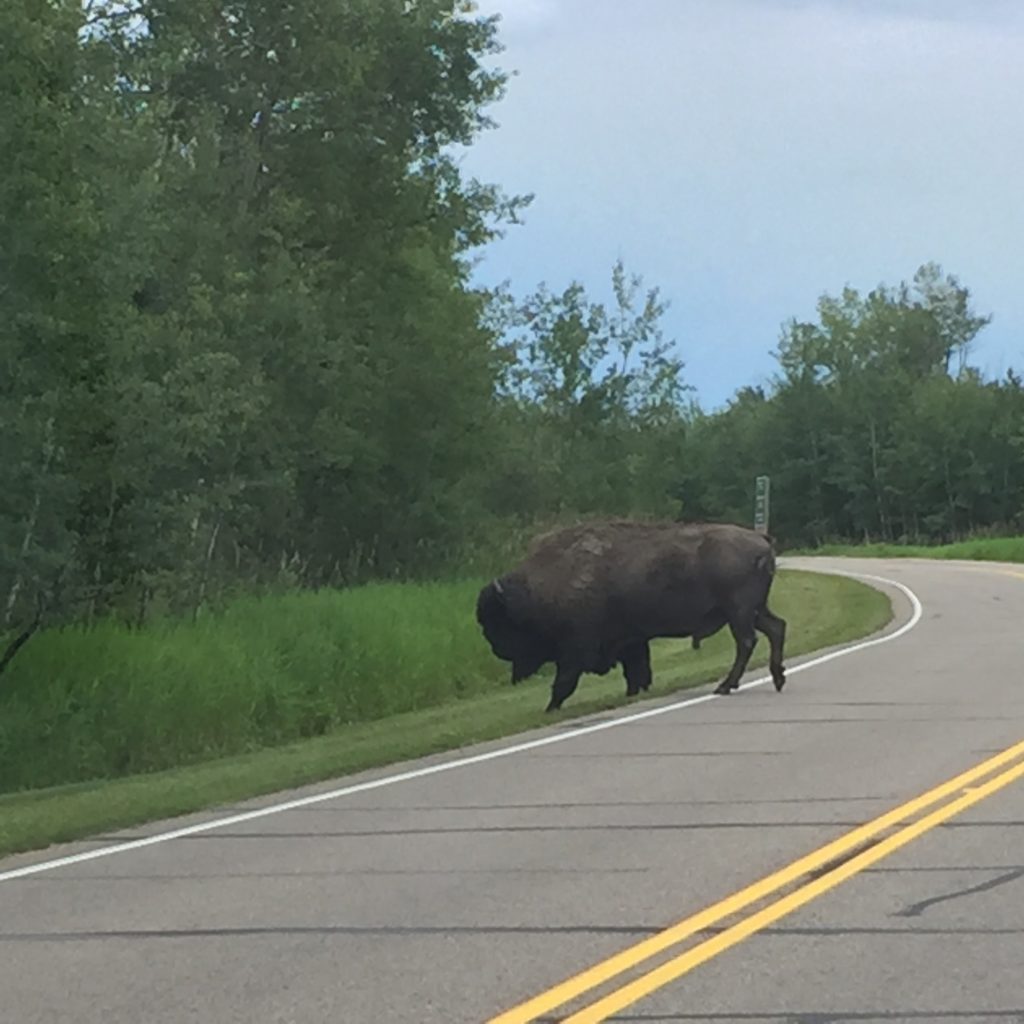
About 400 Bison were shipped to Canada by train. They were supposed to be sent to Buffalo National Park in Wainwright, Alberta but their fence wasn’t finished, so the animals were temporarily diverted to Elk Island National Park where Canada was desperately trying to save the Elk, that, oh, surprise(!) had also been hunted to near-extinction.
Eventually the Bison were shipped to their home in Wainwright, but 50 animals did not make it on that train.
Those ‘lost’ fifty are the ancestors of the 500-plus genetically-pure-disease-free bison that roam Elk Island National Park today.
This past Thursday, Kevin and I stood in the backlot corrals of Elk Island National Park with Sarah Rymer from Parks Canada. “Every winter,” Rymer said, pointing to the back fields, “the Bison are enticed with hay into these corrals.” An aerial view of the corral system looks like the spiral whorls of a Nautilus shell, an animal-calming design by none other than Temple Grandin.
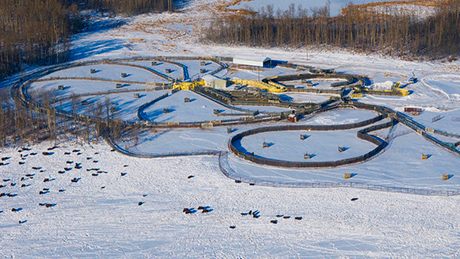
The animals, often weighing up to 1000 kgs (2200 lbs), are slowly moved into smaller and smaller channels, until they are separated as individuals and held in calming ‘squeezing’ pens where separate metal panels can be removed to take blood samples and ensure disease-free herds.
“It is a much quieter than you would imagine,” Rymer continues, “we hide behind pieces of plywood so we remove as much stress for the animals as possible. Although there are about 35 Parks Canada employees in the operation, they see very few of us.”
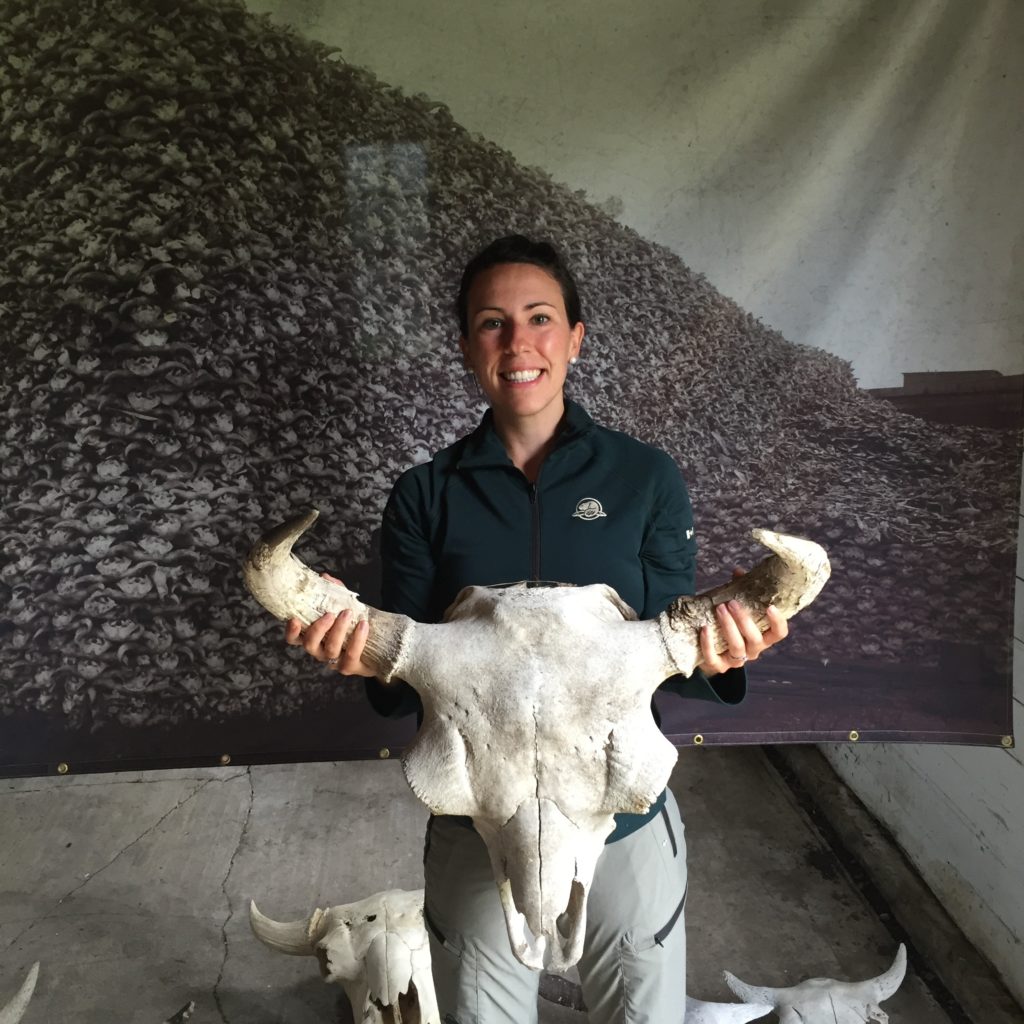
Parks Canada has set the optimum number of the herd within the 194 sq. km. area at around 700-800 (500 plains Bison and 200-300 wood Bison). Surplus numbers of animals are sold either to farmers or, once again to Russia, to further assist their conservation efforts.
Most importantly, in April of this year, 87 Bison were returned to their ancestral home on the Blackfeet Nation reservation in Montana. Elk Island National Park, the Blackfeet Nation and the Wildlife Conservation Society joined forces to create this significant homecoming.
With that, one more beautiful piece was added to a quilt that started so long ago with the actions of Samuel and Sabine Walking Coyote and four baby Bisons.
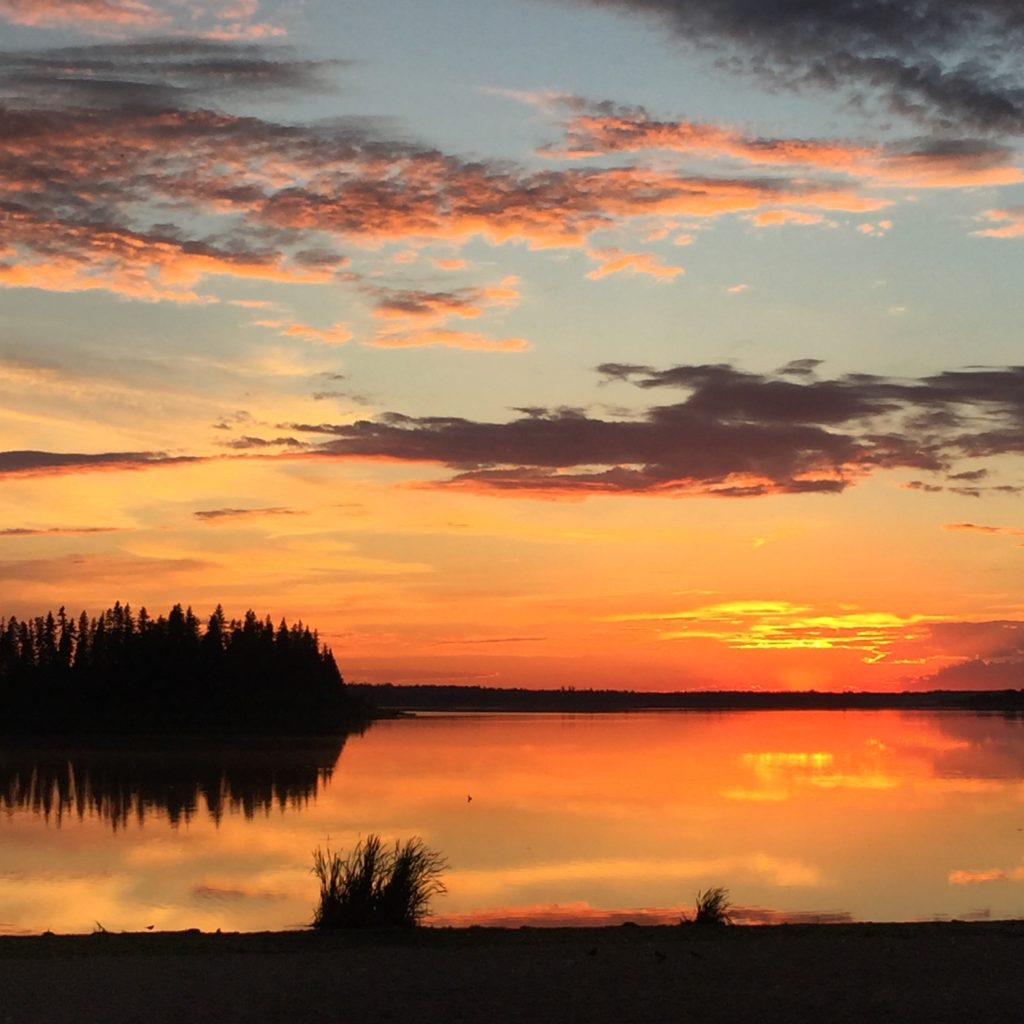
We so often don’t realize that our individual stories are part of a much bigger picture.
Who knows what one right action might start?
Our ancestors ask us to honour them with our lives and our descendants hope we make the right choices.
Let us stitch each piece of our quilt with love.
Let us choose well.
Be good.
PS…If you enjoyed this post, I would really appreciate it if you would share it in any way you can. Thanks!

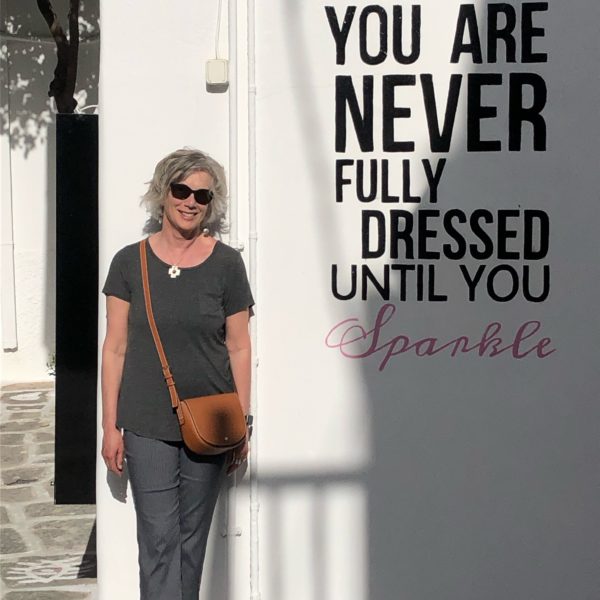
Thanks for the history lesson, Colleen. The photo of the corral is lovely (as are all your pix); the one of the skulls reminded me of the display cases of hair, artificial legs and suitcases on display at Auschwitz.
Safe travels!
Thanks Joan. I loved the Parks Canada aerial view too. If you haven’t seen it, I’d highly recommend the Temple Grandin movie starring Claire Danes.
And like you, I had the same horrifying thought when I saw the stacks of skulls.